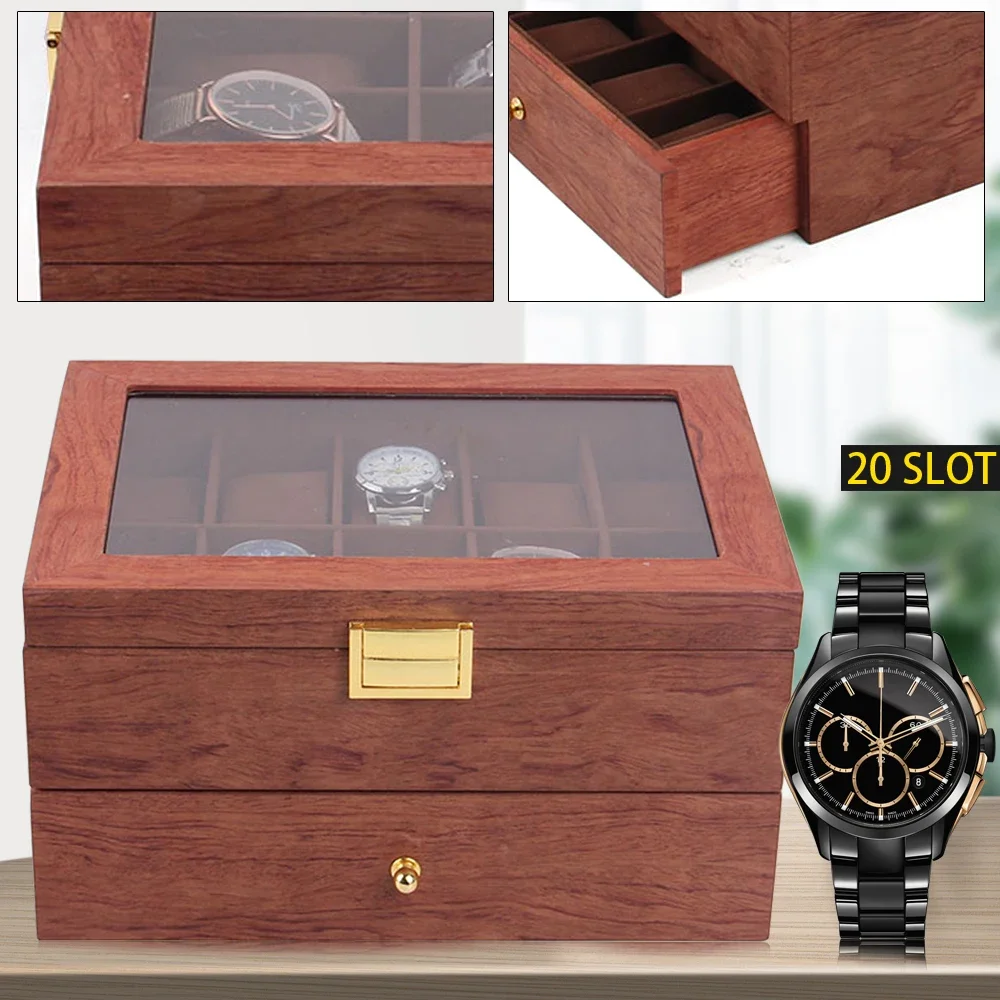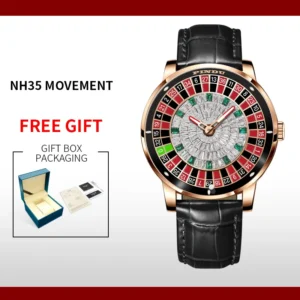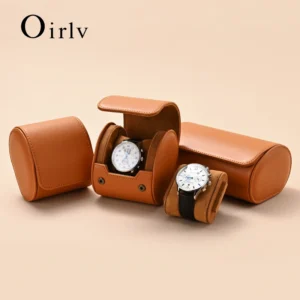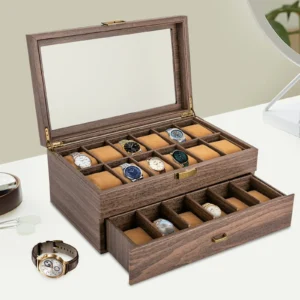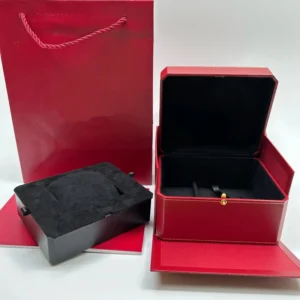Understanding Watch Holders: Protecting Your Investment
Watch holders are specialized storage solutions designed to protect, organize, and display your valuable timepieces. Far more than simple containers, these protective accessories serve as both functional storage and showcases for your prized watches. Proper watch storage is not just about keeping timepieces in one place—it’s about actively preserving their condition and value.
Without appropriate storage, watches are vulnerable to several common problems:
- Scratches on cases, crystals, and bracelets from contact with hard surfaces
- Dust accumulation that can affect movement performance
- Mechanical stress on components when watches are left lying flat
- UV damage to dials and straps from prolonged sun exposure
- Humidity issues that can cause corrosion or mold
The right storage solution can prevent these issues while extending your watch’s lifespan. For collectors, proper storage can be the difference between a timepiece that maintains or increases in value and one that steadily declines. Industry experts estimate that watches kept in proper storage can maintain up to 95% of their value compared to significantly less for improperly stored pieces.
Different watch holder types serve various needs based on your:
– Collection size (from single watches to extensive collections)
– Watch types (automatic vs. quartz, casual vs. luxury)
– Lifestyle (frequent travelers vs. home display preferences)
Developing an effective watch collection storage planning strategy is essential whether you own two watches or twenty. As your collection grows, how you organize your watch collection becomes increasingly important for both protection and enjoyment.
In this guide, we’ll explore the various types of watch holders available, their features, benefits, and how to select the right option for your specific needs.
Watch Boxes: The Essential Collection Storage Option
The watch box is the cornerstone of any serious collector’s storage system. These versatile containers provide comprehensive protection while allowing for organized storage of multiple timepieces in a single, secure location.
Watch boxes come in various configurations, but their primary purpose remains consistent: to protect watches from dust, humidity, and physical damage while keeping them organized and easily accessible. Quality watch boxes typically feature:
- Protective cushions or pillows that maintain bracelet/strap shape
- Soft, non-abrasive lining materials that prevent scratching
- Sturdy exterior construction that shields from impacts and light
- Secure closures that keep dust and debris away from watches
The most common variations include:
- Traditional multi-slot designs with individual compartments
- Glass-top display cases that allow viewing without opening
- Drawer-style configurations for space-efficient storage
- Combination boxes with additional jewelry or accessory storage
Materials used in quality watch boxes vary widely, with hardwood, leather, and carbon fiber among the most popular choices. The interior typically features velvet, suede, or microfiber lining—materials chosen specifically for their scratch-free properties.
When evaluating watch boxes, consider:
- Cushion quality and fit (too loose or tight can damage watches)
- Interior space dimensions (to accommodate larger watch cases)
- Divider construction (to prevent watches from contacting each other)
- Lid hinge quality and closure security (to ensure dust protection)
Watch boxes typically range from 2-slot travel cases to extensive 24-slot collector boxes, with most home collections well-served by 6-12 position options. Standard dimensions hover around 12 × 8 × 3 inches (30 × 20 × 8 cm), though sizes vary based on capacity and design.
Traditional Multi-Slot Watch Boxes
The traditional multi-slot watch box represents the standard configuration that most collectors start with. These boxes feature individual compartments separated by fixed or removable dividers, each containing a cushion or pillow to hold a single watch.
The construction of these boxes varies significantly based on quality and price point. Entry-level options typically feature fiberboard construction with leather or leatherette covering, while premium versions use solid hardwoods like walnut, cherry, or mahogany. High-end luxury watch boxes often feature hand-finished wood with exotic veneers or inlays.
Interior configurations typically include:
- Watch cushions or pillows (cylindrical or rectangular)
- Dividers (fixed or removable depending on design)
- Additional compartments for accessories or tools
- Protective padding on the underside of lids
The lid design significantly impacts both function and aesthetics. Glass-top or display models feature a transparent viewing panel that allows you to see your collection without opening the box—ideal for showcasing pieces while keeping them dust-free. Solid lids provide maximum protection against light exposure, which can fade dials over time.
Security features vary by model and typically include:
- Basic closures (magnetic or snap)
- Lock-and-key mechanisms for valuable collections
- Combination locks for higher security needs
- Hidden compartments in premium models
Premium box interiors typically feature anti-tarnish materials and moisture-resistant treatments that provide additional protection for valuable timepieces.
Single Watch Cases and Travel Pouches
For individual watch protection or on-the-go storage, single watch cases and pouches offer focused protection in compact packaging. These smaller holders strike a balance between accessibility and security for your timepiece.
Single watch storage solutions generally fall into two categories:
- Hard cases with rigid shells that resist crushing and impact
- Soft pouches that offer lighter protection with maximum portability
Hard cases typically feature molded exteriors made from materials like:
- Polycarbonate or ABS plastic for durability and impact resistance
- Carbon fiber for lightweight strength
- Leather-wrapped wood for elegant protection
Soft single watch travel cases usually incorporate:
- Exterior materials like leather, ballistic nylon, or microsuede
- Padded interiors with cushioning to prevent movement
- Scratch-resistant linings like microfiber or soft velvet
The closure system significantly impacts security and ease of use, with options including:
- Zipper closures for maximum security
- Snap or magnetic closures for quick access
- Fold-over flap designs for elegant simplicity
Single cases excel in situations where you need to transport just one timepiece, such as when traveling for business with a dress watch or bringing a sports watch for specific activities. They also serve well for daily storage of your most frequently worn watch, keeping it protected when not on your wrist.
Watch Winders: Keeping Automatic Watches Ready
For collectors with automatic (self-winding) watches, watch winders serve a crucial function beyond mere storage. These specialized devices keep unworn automatic watches running by mimicking the natural wrist movement that powers their mechanisms.
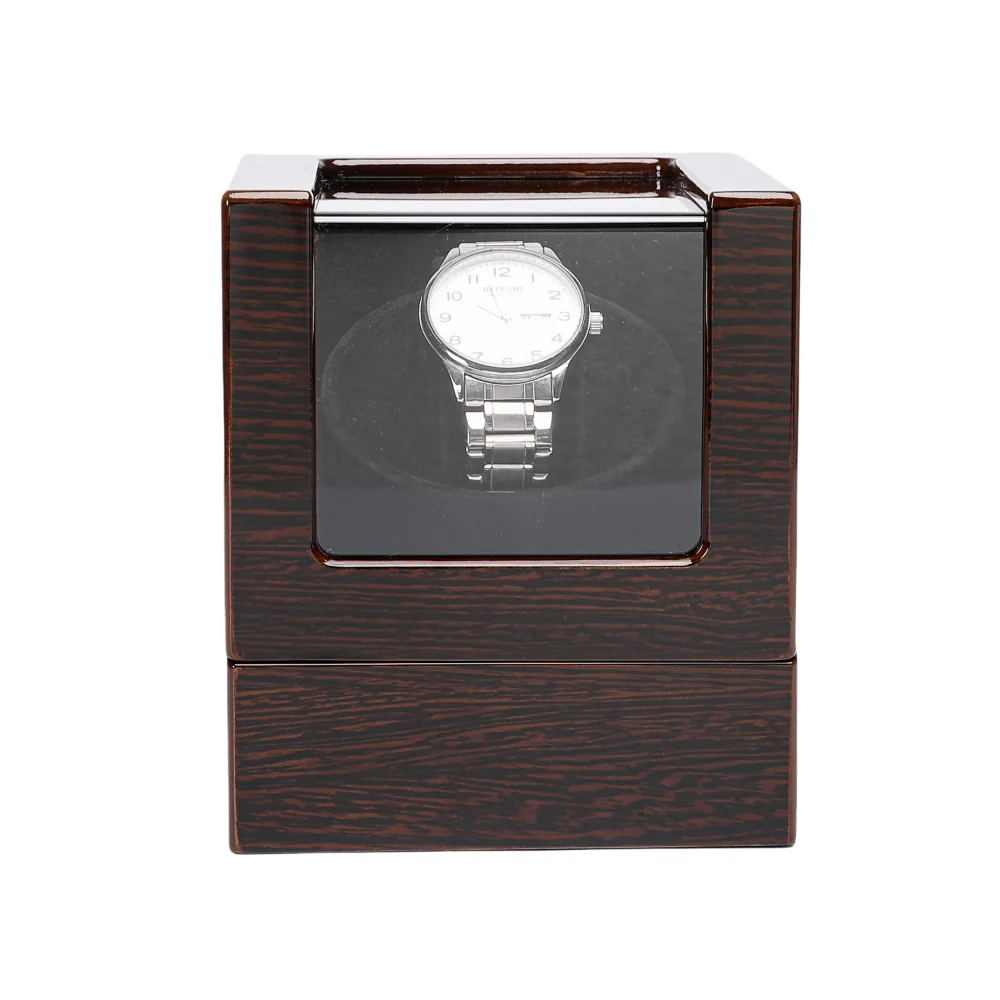
Automatic watches rely on movement to stay powered—when worn, the motion of your wrist turns an internal rotor that winds the mainspring. When not worn, these watches eventually stop running (typically within 24-72 hours), requiring resetting of time and sometimes date functions. Watch winders prevent this inconvenience while also providing several mechanical benefits:
- Maintaining proper lubrication distribution throughout the movement
- Preventing oil coagulation that occurs in stationary movements
- Reducing wear and tear from frequent manual winding
- Keeping complications like perpetual calendars accurate
Modern watch winders offer varying levels of programming sophistication:
- TPD (Turns Per Day) settings to match specific watch requirements
- Rotation direction control (clockwise, counterclockwise, or bidirectional)
- Intermittent vs. continuous rotation options
- Rest period programming to prevent over-winding
Winders range from simple single-watch models to elaborate units housing dozens of timepieces, with features and prices varying accordingly.
Single Watch Winders
Single watch winders focus on maintaining one automatic watch with precision and care. These units are ideal for watch enthusiasts who wear multiple watches in rotation or those with a special occasion timepiece they want ready at a moment’s notice.
The most common single winder designs include:
- Cube or cylinder designs for desktop placement
- Display case styles with glass or acrylic viewing panels
- Enclosed box designs that prioritize dust protection
- Wall-mountable units for space efficiency
Quality single watch winders differentiate themselves through:
- Motor quality (Japanese motors are often preferred for quiet operation)
- Programming flexibility (adjustable TPD and rotation direction)
- Power options (AC adapter, battery power, or dual-power capabilities)
- Cushion adaptability (fitting different watch sizes and weights)
Premium single winders typically operate at noise levels under 10 decibels, making them virtually silent even in quiet bedrooms. They typically measure around 4 × 6 × 6 inches (10 × 15 × 15 cm), making them compact enough for nightstand placement.
The ability to precisely match your specific watch’s winding needs is a key advantage of quality single winders. Different watch movements have different optimal winding parameters—some require as few as 650 TPD while others need up to 1,800 TPD for ideal performance.
Multi-Watch Winders
For collectors with multiple automatic timepieces, multi-watch winders offer efficiency in both space and power consumption. These larger units can accommodate anywhere from 2 to 24+ watches depending on the model, with most home collectors favoring the 4-8 watch range.
Critical distinctions among multi-winders include:
- Independent motors vs. shared motors
- Individual TPD programming vs. uniform settings
- Separate rotation direction control vs. unified direction
- Modular expansion capabilities in some systems
Premium multi-winders feature independent motors and programming for each watch position, allowing different settings to match each timepiece’s specific requirements. Budget models often use shared motors with uniform settings, which works for collections with similar watch movements but may not be ideal for diverse collections.
Space efficiency becomes a significant advantage as collections grow—a six-watch winder typically occupies only about twice the space of a single winder while handling six times the capacity. This efficiency extends to power consumption and overall cost compared to multiple individual units.
Understanding how watch winder rotation cycles work helps in selecting the right model for your specific collection needs and ensuring proper maintenance of your automatic watches.
Travel Watch Holders: Protection On The Go
Traveling with watches presents unique challenges that require specialized protection solutions. From airport security jostling to changing climate conditions, watches face numerous hazards when on the move that don’t exist in home storage.
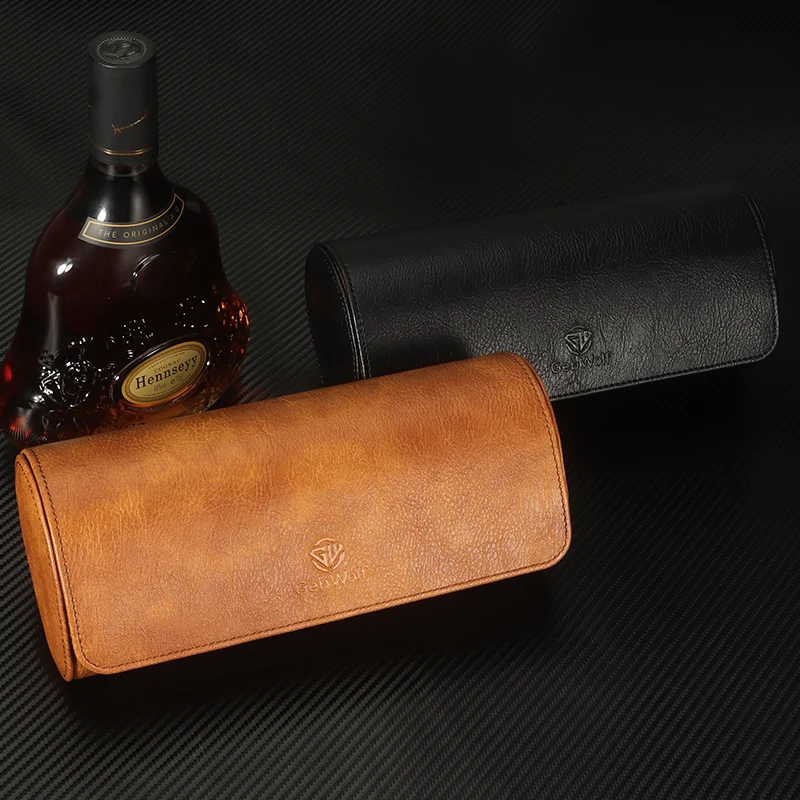
Key concerns for traveling watch collectors include:
- Physical protection from impacts and compression in luggage
- Security against theft or loss
- Protection from climate changes (humidity, temperature)
- Space efficiency in limited packing conditions
Travel watch holders address these challenges through specialized designs and materials that maximize protection while minimizing bulk. Understanding the differences between watch boxes vs. watch rolls helps travelers select the right option for their specific journey.
Protective features to look for in travel holders include:
- Crush-resistant construction (for luggage placement)
- Secure closures that won’t open accidentally
- Moisture-resistant materials or treatments
- Interior padding that prevents movement during transit
The three main categories of travel watch storage—soft rolls, structured cases, and hard cases—each offer different balances of protection, convenience, and space efficiency.
Watch Rolls and Pouches
Watch rolls represent the most space-efficient and lightweight option for watch transportation. Their flexible design allows them to conform to available packing space while still providing substantial protection.
Traditional watch rolls feature:
- A rectangular fabric panel with individual watch slots
- Cushioned dividers between positions to prevent contact
- A cylindrical shape when rolled up
- Tie, snap, or zipper closure systems
Modern watch roll travel cases come in various materials including:
- Full-grain leather for luxury and patina development
- Canvas for durability and casual aesthetics
- Nylon or technical fabrics for water resistance
- Microfiber for maximum scratch protection
Capacity typically ranges from 1-8 watches, with 3-5 positions being most common. When rolled, these holders typically measure around 8 × 3 inches (20 × 7.5 cm), making them easy to slip into carry-on luggage or even a jacket pocket for smaller models.
The primary advantages of watch rolls include:
- Minimal weight addition to luggage
- Flexibility to fit odd-shaped packing spaces
- Casual, stylish appearance suitable for business travel
- Affordability compared to rigid cases
Watch rolls work best for shorter trips or watches with moderate value, where extreme impact protection isn’t the primary concern.
Hard Travel Cases
For maximum protection during travel, especially for high-value timepieces, hard travel cases provide unparalleled security. These rigid containers borrow design principles from camera and equipment cases, prioritizing absolute protection over convenience.
Hard travel cases typically feature:
- Waterproof and dustproof seals (often with IP67 or higher ratings)
- Impact-resistant outer shells (polycarbonate, aluminum, or composite materials)
- Custom-cut foam interiors that prevent any movement
- Pressure equalization valves for air travel
- Heavy-duty latches or locks for security
These cases excel in challenging environments where watches might face extreme conditions:
- Adventure travel with exposure to elements
- Air travel where luggage handling can be rough
- Shipping watches for service or sales
- Long-term storage during extended travel
The trade-off comes in weight and bulk—hard cases typically weigh significantly more than soft options and have fixed dimensions that can’t compress to fit tight packing situations. However, for valuable collections or extreme environments, this trade-off is well worth the superior protection.
Watch Accessories, Watch Holder
$94.51 Select options This product has multiple variants. The options may be chosen on the product pageLuxury Watch Boxes, Men's Watch Boxes, Single Watch Box
Price range: $903.35 through $980.97 Select options This product has multiple variants. The options may be chosen on the product pageSingle Watch Travel Case, Watch and Jewelry Box, Watch Roll Travel Case
Price range: $93.44 through $140.65 Select options This product has multiple variants. The options may be chosen on the product pageMen's Watch Organizer, Watch Display Case, Watch Organizer
Price range: $112.68 through $169.45 Select options This product has multiple variants. The options may be chosen on the product pageAutomatic Watch Winder, Luxury Watch Winder, Single Watch Box
$307.39 Select options This product has multiple variants. The options may be chosen on the product pageLuxury Watch Boxes, Luxury Watch Travel Case
Price range: $200.33 through $224.57 Select options This product has multiple variants. The options may be chosen on the product page
Display and Quick-Access Holders
Not all watch storage solutions are designed for long-term protection—some prioritize visibility and accessibility for watches in regular rotation. Display holders balance protection with showcasing your timepieces as the functional art objects they are.
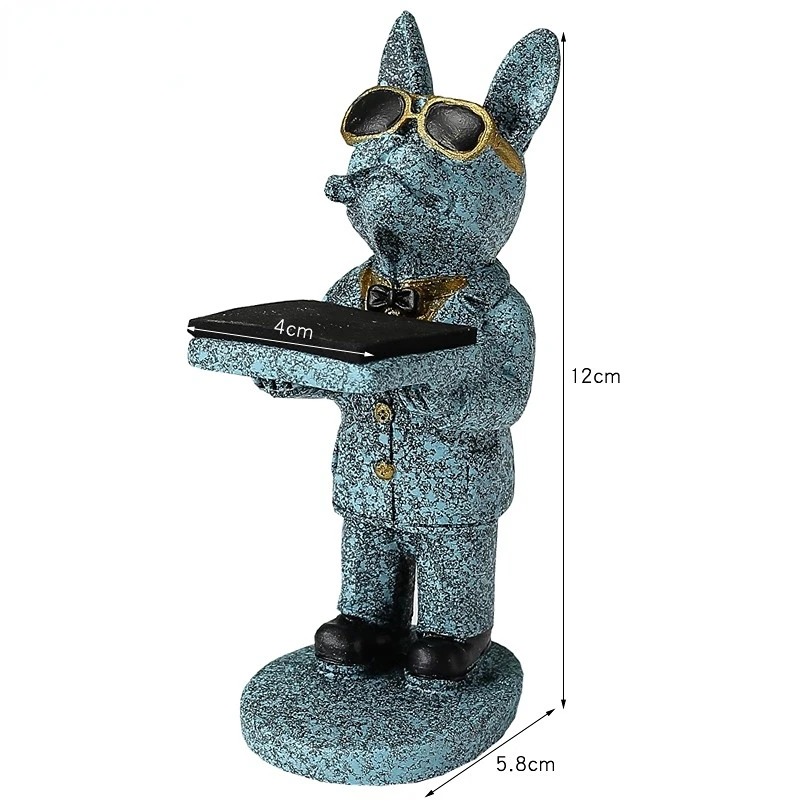
Unlike enclosed storage, watch display holders are designed to make watches visible and easily accessible, ideal for:
- Frequently worn watches in your regular rotation
- Showcasing particularly beautiful or interesting pieces
- Creating a dressing area where watches are part of your daily routine
- Retail or exhibition display of collections
The primary categories include:
- Individual watch stands and pedestals
- Multi-watch display trays
- Wall-mounted display cases or racks
- Valet trays with dedicated watch sections
While offering less comprehensive protection than enclosed storage, quality display holders still incorporate protective elements:
- Soft contact surfaces to prevent scratching
- Stable bases to prevent tipping
- Some UV protection in glass-fronted displays
- Dust covers for some models
Materials are often selected as much for aesthetic appeal as protective properties, with common choices including:
- Clear acrylic for modern, minimalist displays
- Wood for warm, traditional presentations
- Leather for luxury and sophistication
- Metal for industrial or contemporary styling
When using display holders, location becomes particularly important—keeping watches away from direct sunlight, humidity sources, and high-traffic areas helps mitigate the reduced protection compared to enclosed storage.
Watch Stands and Pedestals
Individual watch stands serve as both functional storage and display pieces, elevating a single timepiece as a highlighted object. These minimalist holders come in countless design variations to complement different watch styles and home decor.
Basic watch holder types include:
- T-bar stands that display the watch upright
- Cushioned horizontal pedestals
- Angled display stands showing watches at optimal viewing angles
- Sculptural art pieces that incorporate watch storage
Materials vary widely based on design intent:
- Solid wood bases with natural finishes
- Metal stands with brushed or polished surfaces
- Acrylic or glass for contemporary transparency
- Combination materials for textural contrast
Protective features in quality stands include:
- Padded or covered contact points to prevent scratching
- Weighted bases to prevent tipping
- Non-slip surfaces to hold watches securely
- Rounded edges that won’t damage straps or bracelets
Watch stands excel as nightstand storage for daily-wear timepieces, allowing easy access while still providing basic protection and preventing accidental damage that might occur from placing watches directly on hard surfaces.
Watch Trays and Valet Stations
Watch trays and valet stations expand the display concept to accommodate multiple watches alongside other daily essentials. These versatile organizers create a dedicated space for your everyday carry items, keeping watches visible and accessible while maintaining basic protection.
Common configurations include:
- Dedicated watch trays with multiple positions
- Combination trays with sections for watches, keys, wallet, and phone
- Drawer organizers with watch-specific compartments
- Charging stations that incorporate watch storage
Materials typically emphasize both aesthetics and functionality:
- Leather-lined trays for luxury and scratch protection
- Wooden bases with felt or microfiber lining
- Metal frames with padded compartments
- Multi-material combinations for visual interest
Unlike enclosed storage, trays and valets prioritize convenience over comprehensive protection. They’re ideal for:
- Daily rotation watches that are worn frequently
- Organized dressing areas and bedside tables
- Temporary storage during activities where watches are removed
- Creating a consistent home for watches to prevent misplacement
The open design means these solutions are best for short-term storage in controlled environments rather than long-term protection or travel.
Secure Watch Storage Solutions
For collectors with valuable timepieces, standard storage sometimes isn’t sufficient. High-value watches often require enhanced security beyond what conventional watch boxes provide, particularly for insurance compliance or peace of mind.
Secure storage solutions address multiple risk factors:
- Theft protection through physical security
- Fire resistance for irreplaceable pieces
- Unauthorized access prevention
- Documentation for insurance purposes
Creating a luxury watch storage setup with appropriate security measures becomes increasingly important as collection value grows. Insurance companies often specify storage requirements for watches above certain value thresholds, making secure options a necessity rather than a luxury for serious collectors.
Secure solutions range from lockable display cabinets to dedicated watch safes, with security features proportional to the collection value and risk assessment:
- Basic locking watch boxes for moderate security
- Watch cabinets with reinforced construction
- Specialized watch safes with extensive protection
- Custom vault installations for exceptional collections
Even with secure storage, many collectors maintain insurance documentation including:
- Purchase receipts and certificates of authenticity
- Regular appraisal updates for value changes
- Photographs of watches with serial numbers
- Records of service history and condition
Watch Safes
Dedicated watch safes represent the ultimate in timepiece protection, combining security features with watch-specific storage functionality. Unlike general-purpose safes, watch safes include interior features designed specifically for timepiece storage and maintenance.
Key features of quality watch safes include:
- Watch winder integration for automatic pieces
- Humidity control systems to prevent corrosion
- Interior lighting for visibility without opening
- Specialized watch trays and compartments
- Fire protection ratings (typically 30-120 minutes)
Security mechanisms vary based on price point and security needs:
- Electronic keypads with backup key access
- Biometric fingerprint readers
- Mechanical combination locks
- Redundant locking mechanisms
Installation options include:
- Freestanding safes with substantial weight to prevent removal
- Wall-mounted installations for space efficiency
- Floor safes for maximum concealment
- Custom closet or cabinet integrations
Interior organization mimics traditional watch boxes but with enhanced materials suitable for long-term storage. Many high-end watch safes include programmable LED lighting, dehumidification systems, and even remote monitoring capabilities.
For collections containing multiple high-value pieces, watch safes often become a necessity rather than a luxury, particularly when home insurance policies limit coverage without appropriate security measures.
Choosing the Right Watch Holder
Selecting the ideal watch holder requires balancing several factors unique to your collection and lifestyle. With the variety of options available, finding the perfect match means considering both your watches’ needs and your personal preferences.
Start by assessing your current situation:
- How many watches do you currently own?
- What types of watches make up your collection? (automatic, quartz, vintage)
- How frequently do you wear each piece?
- Do you travel with watches regularly?
- What’s your available space for watch storage?
- What’s your budget for storage solutions?
The answers to these questions will guide you toward certain categories of watch holders. For example, a collection of mostly automatic watches suggests winder storage, while frequent travelers might prioritize protective travel cases.
Environmental factors also play a crucial role in selection:
- Local humidity levels may necessitate moisture control
- Available space might limit storage options
- Display preferences affect visibility vs. protection balance
- Security concerns might require lockable solutions
Understanding collector guide watch holders principles helps balance these factors for an ideal storage solution that fits both your watches and your lifestyle.
Collection Assessment Considerations
A thorough assessment of your watch collection forms the foundation for selecting appropriate storage. Consider both your current collection and realistic growth projections to avoid outgrowing your storage solution too quickly.
Key assessment areas include:
Collection Size and Growth
– Current number of watches
– Anticipated additions in next 1-2 years
– Space needed for potential “grail” pieces
Watch Type Distribution
– Percentage of automatic vs. quartz movements
– Case sizes (especially oversized watches)
– Bracelet vs. strap prevalence
– Special pieces with unusual dimensions
Wearing Patterns
– Daily rotation watches vs. occasional wear pieces
– Seasonal watches (dive watches for summer, etc.)
– Special occasion timepieces
– Investment pieces rarely worn
Value Distribution
– High-value pieces requiring extra protection
– Sentimental pieces with personal significance
– Vintage watches with special storage needs
– Modern watches under warranty
For example, a collector with primarily automatic watches worn in regular rotation might prioritize a watch winder system, while someone with varied quartz and automatic pieces might prefer a combination of winders and standard storage.
Creating a simple inventory with these factors noted for each watch can reveal patterns that inform your storage strategy.
Environmental and Lifestyle Factors
Beyond your collection itself, environmental conditions and lifestyle patterns significantly impact which storage solutions will serve you best. These external factors often determine whether a storage solution will be practical for daily use.
Climate Considerations
– High humidity regions may require dehumidifiers or silica gel packets
– Dry climates might need humidity introduction to prevent leather drying
– Temperature fluctuations can affect both watches and storage materials
– UV exposure concerns for displays near windows
Living Situation
– Available space for storage (dresser top, closet, dedicated watch cabinet)
– Aesthetic preferences that complement home decor
– Security needs based on household access
– Display vs. concealment preferences
Travel Frequency and Type
– Business travel requiring dress watches
– Adventure travel with durability concerns
– International travel with security considerations
– Weekend trips vs. extended journeys
Daily Routines
– Morning selection process for daily wear
– Evening storage ritual when returning home
– Rotation system for multiple watches
– Storage location proximity to dressing area
These factors combine to create a personal profile that guides selection. For instance, a frequent business traveler living in a humid climate might prioritize a quality travel case and home storage with humidity control, while a collector in a secure home environment might focus on display aesthetics.
Maintenance of Watch Storage Solutions
Even the finest watch holders require regular maintenance to continue providing optimal protection for your timepieces. Proper care ensures both the longevity of your storage solution and the continued protection of your watches.
Different materials require specific maintenance approaches:
Wooden Watch Boxes
– Dust regularly with a soft cloth
– Apply appropriate wood polish 2-3 times yearly
– Keep away from direct sunlight to prevent fading
– Maintain stable humidity to prevent warping
Leather Exteriors
– Clean with leather-specific cleaner when needed
– Condition 2-4 times yearly to prevent drying and cracking
– Protect from sharp objects that could scratch or gouge
– Keep away from excessive moisture
Glass Elements
– Clean with non-ammonia glass cleaner
– Use microfiber cloths to prevent scratching
– Check seals regularly for dust penetration
– Avoid temperature shocks that could crack glass
Watch Winder Maintenance
– Keep air vents dust-free for proper motor cooling
– Check rotation function regularly
– Replace batteries in battery-powered models as needed
– Listen for unusual noises that might indicate motor issues
Interior components like cushions and dividers should be inspected regularly for wear or compression. Many collectors replace cushions every few years to maintain proper shape and support for watches.
A regular maintenance schedule might include:
– Weekly dust removal and inspection
– Monthly detailed cleaning
– Quarterly assessment of mechanical parts (hinges, locks, winders)
– Annual deep cleaning and condition evaluation
Common Questions About Watch Storage
As collectors develop their storage systems, several common questions frequently arise. Here are answers to some of the most typical concerns about watch holders and storage practices:
Do automatic watches need to be kept on winders?
Automatic watches don’t require constant winding to remain healthy. However, winders are convenient for keeping frequently worn watches ready to use without resetting. For watches worn less than monthly, manual winding before wear is generally sufficient.
Can watches share cushions in storage?
Ideally, each watch should have its dedicated cushion or pillow. Sharing can cause bracelets or straps to stretch or deform over time. Additionally, watches can scratch each other when placed too closely together.
How long can a watch safely remain in storage?
Quartz watches can remain stored for their battery life (typically 1-3 years) with minimal concerns. Automatic watches benefit from movement every 3-6 months to maintain lubrication distribution. For long-term storage of valuable pieces, periodic professional maintenance is recommended.
Are leather watch boxes better than wooden ones?
Neither material is inherently superior—both can provide excellent protection when well-constructed. Wooden boxes often offer better structural integrity and humidity stability, while leather exteriors frequently provide more aesthetic options and sometimes better cushioning.
Should watch boxes be stored in a safe?
For collections with significant value, storing watch boxes within a safe provides additional protection against theft and potential disaster damage. This combined approach offers both the specialized storage benefits of watch boxes and the security of a safe.
Finding innovative watch storage ideas collectors can use often involves combining different storage types to meet specific needs. Many serious collectors ultimately develop a multi-tiered approach with winders for regular rotation pieces, display options for frequently worn watches, and secure storage for valuable or rarely worn timepieces.

